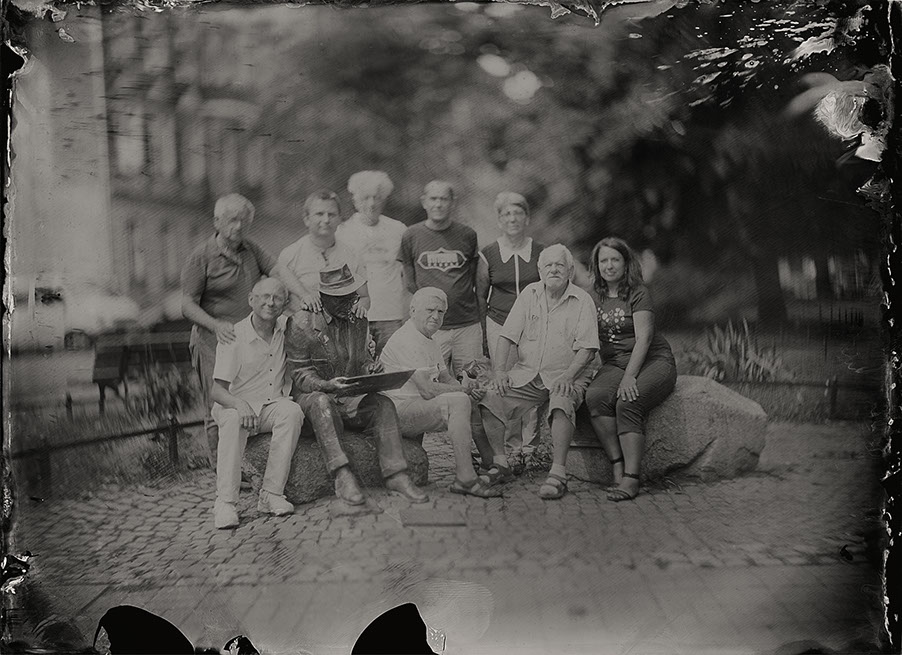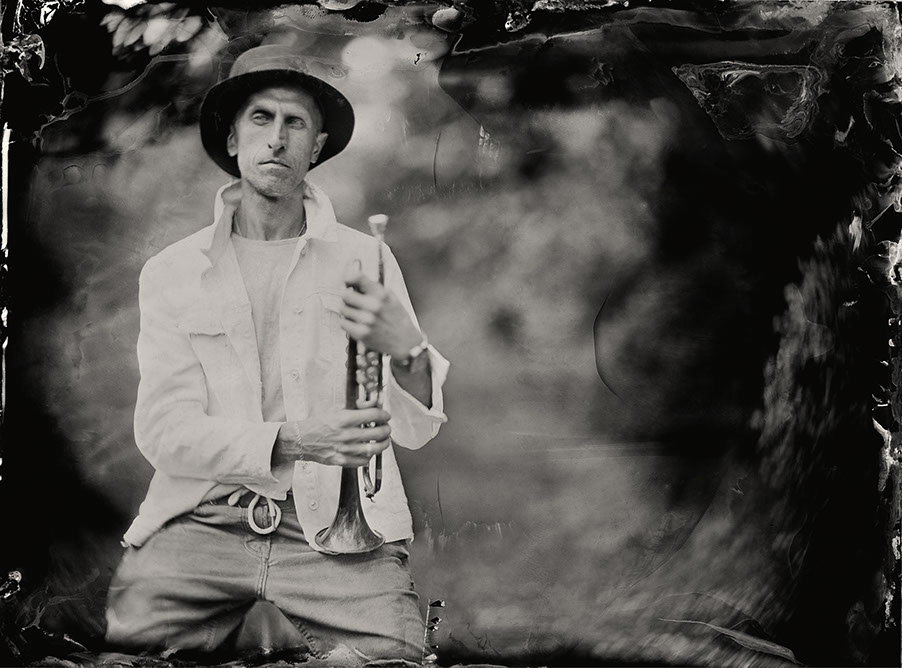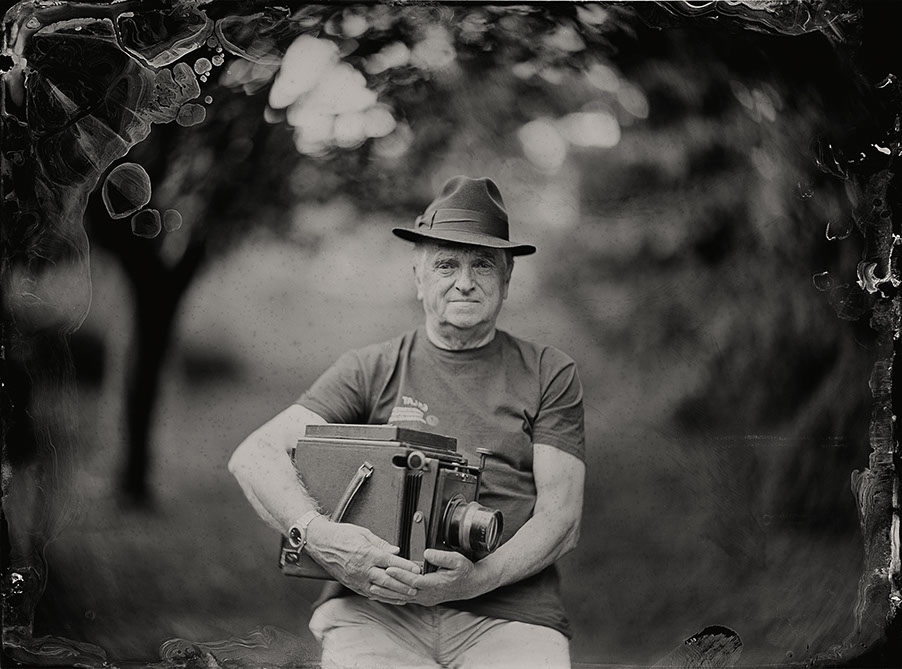Wet Plate Collodion Portraits

The wet collodion technique, invented in 1851 by the English sculptor Frederik Scott Archer, also called the wet collodion plate, is one of the first photographic techniques invented and the first technique to obtain a glass negative that could be easily reproduced (which contributed to the popularization of photography in nineteenth century). This method, compared to other photographic techniques, is unique – each photograph is subjected to individual processing, it is characterized by exceptional image vividness.
It is a technique used mainly in portrait photography, but often also in landscape photography.
In this process, the photographer independently, manually prepares the photosensitive material: a glass plate or other substrate (e.g. blackened iron plate, black plexiglass) after thorough cleaning (we use here surface-active or absorption methods or both) is covered with iodized collodion (a mixture of collodion cotton with alcohol, ether and iodine salts) and then, after the top collodion layer has hardened, the plate is immersed in a silver nitrate solution, as a result of which the collodion layer is sensitized. The prepared plate should be placed in a large-format camera and a picture taken.
Contrary to popular photographic materials, in the wet collodion, the photo is developed by pouring the developer solution on the plate, holding the plate in hand.
rocking the plate while trying to keep the developer on the surface of the plate. The latter is so important that along with coincidence
With the developer flowing off the plate, we lose part of the silver contained in the emulsion, and thus the image density is lost. With a properly exposed plate, the image should start to appear in bright parts after about 2-5 seconds, halftones will appear after 5-10 seconds of developing, and when shadows start to appear, we should start interrupting the development process. We stop by pouring water on the inclined plate. At first the surface of the plate will appear oily and the water will run off unevenly, but when the development process is completely stopped, the water will run continuously over the plate. Naturally, we perform calling and interrupting under safe lighting.
After developing, transfer the disc to the fixer. We can do it in daylight, because after properly interrupting the development
the plate is no longer sensitive to light. We keep it in the fixer, stirring it from time to time, until all visible unexposed silver salts are dissolved.
The workshop was held under the supervision of a photographer, a member of ZPAF and GTF, Marcin Andrzejewski, who has been living in London for 15 years, who also provided a large-format camera with a special cassette for 18x24cm glass films and English chemical reagents of good quality.
The workshop was attended by 8 members of the GTF, willing sympathizers of the Society were portrayed.




Wrzesień 2020, Mała Galeria GTF, Gorzów Wlkp
